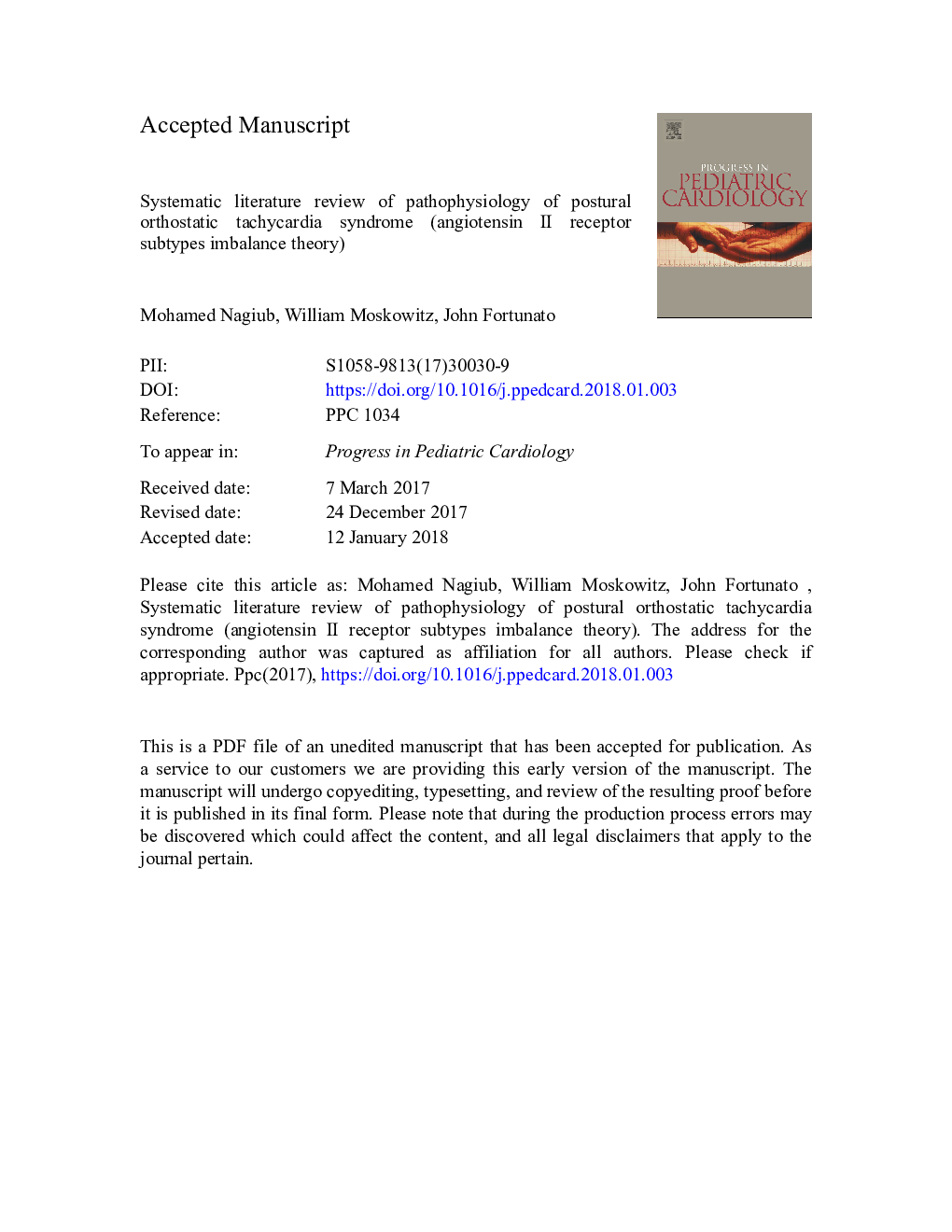| Article ID | Journal | Published Year | Pages | File Type |
|---|---|---|---|---|
| 10215011 | Progress in Pediatric Cardiology | 2018 | 52 Pages |
Abstract
The pathogenesis of postural orthostatic tachycardia syndrome (POTS) is incompletely understood. This study aimed to identify different theories of possible POTS pathogenesis and to formulate evidence-based pathogenesis that correlates with different clinical pictures. Five databases were searched systematically using predefined key words. Inclusion criteria for studies were comparing POTS patients to a normal population regarding different forms of pathogenesis. Predefined exclusion criteria for studies were: animal subjects-non-POTS-case reports AND review articles. Selected studies were categorized into theories according to the studied parameter(s) in each manuscript. Cochrane risk of bias was calculated for each study. A qualitative narrative synthesis of the evidence was performed to critically appraise different theories. Sixty-two studies were identified as POTS pathogenesis. Studies were categorized under ten theories: sympathetic/baroreceptor, flow, neuroendocrine, age/gender, nitric oxide, collagenic, autoimmune, genetic, isolated regional neuropathy and hypovolemia. Isolated regional neuropathy and hypovolemia theories were rejected. Collagenic, autoimmune and genetic theories were accepted as predisposing factors rather than the primary POTS pathogenesis. Angiotensin II receptor subtype AT1/AT2 imbalance could integrate neuro-hormonal, flow, baroreceptor and nitric oxide theories and consequently explains different POTS patients' profiles. Our study was registered in the International Prospective Register of Systematic Review (PROSPERO # CRD42015016769).
Keywords
Related Topics
Health Sciences
Medicine and Dentistry
Cardiology and Cardiovascular Medicine
Authors
Mohamed Nagiub, William Moskowitz, John Fortunato,
